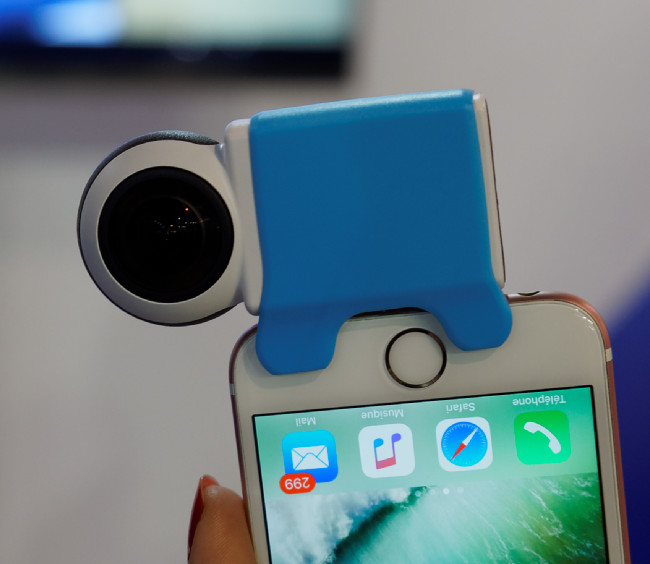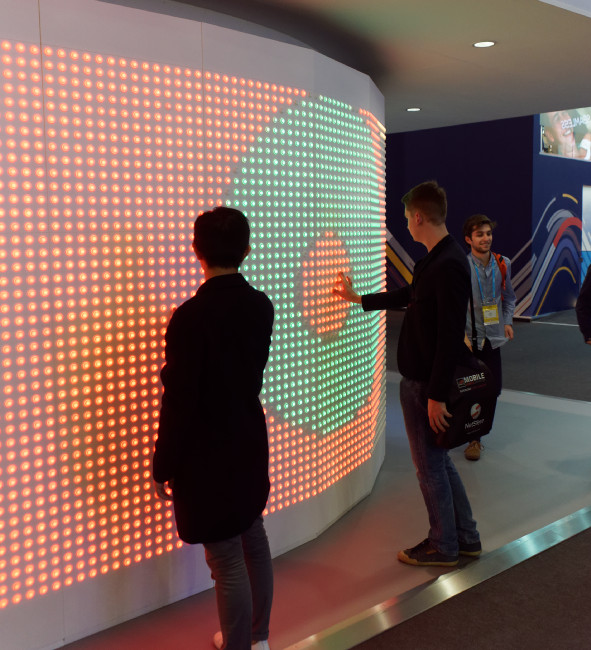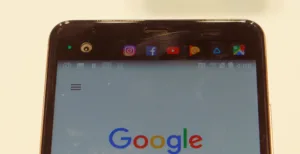We reported on Giroptic, which makes 360º cameras from Laval Virtual last year (Laval Virtual Round-Up) and at MWC, the company was showing a more entry-level camera that uses just two lenses (last year’s had three) but sells for €249. The camera supports iOS only and is designed to clip onto an iPhone. It supports Apple’s iMessage software. Stitching is done in real time and video or stills can be created. The company said that the technology is ready for the live 360º channels that are likely to appear in the near future. In the middle of the year, the company plans to have a version for Android.
 Giroptic’s 360 deg iOS camera costs €249. Image:Meko
Giroptic’s 360 deg iOS camera costs €249. Image:Meko
Goodix (Shenzhen Huiding Technology Co) was at the show and talking about its fingerprint technology which it claims can be integrated with AMOLEDs. Part of the display has to be designated for the fingerprint area, but the technology opens the way to more and more of the smartphone surface being a display and eliminating the need for a dedicated fingerprint button. Unfortunately, when we visited the booth, staff were busy, so we couldn’t get more details.
Google announced that it has shipped 10 million Cardboard viewers. The Google VR team also took the opportunity to announce Sky VR, a new premium VR video content app, and three new augmented reality experiences – The Sims, Chelsea Kicker and WSJ AR – for Tango-enabled devices. Outside its booth, it had a big LED display. Each pixel was an interactive switch.
 Google had an interactive LED display on the outside of its booth that was drawing attention! Image:Meko
Google had an interactive LED display on the outside of its booth that was drawing attention! Image:Meko
Haier was showing the Ginger 7s, a 5.0″ HD device using 2.5D glass and using 13MP and 5MP cameras. The processor is a Mediatek MT6737 with 2GB of RAM and 16GB of ROM. The Voyage V6 uses a 5.5″ FullHD IPS display with in-cell touch and using a Mediatek MT6750 chip and 3GB/32GB of memory. There are 13MP (PDAF)_ and 8MP fixed focus cameras. Sound is by DTS. The L7 has a similar specification, although the selfie camera is a 5MP unit.
Hardent was at the show to talk about its DSC compression that has now been adopted by HDMI for version 2.1 and is already in DisplayPort. DSC is now at V1.2 which adds support for YCbCr data and 4:2:2 and 4:2:0 chroma sub-sampling which should widen the opportunities for the use of the standard. There were no announcements but we had a discussion about the DSC concept. It seems that other codecs such as TICO or JPEG2000 which are based on wavelets have lower levels of complexity in the calculations, but as they operate in the spatial domain, there are quite a lot of artefacts (such as mosquito noise) when used on graphics. DSC works in the time domain, so avoids these artefacts to maintain graphics quality, but the need for some more memory can make FPGA implementations less simple. There are not many gates compared to an SoC, but A/V products often use FPGAs because of the lower volumes of unit sales in A/V, so DSC is not economic.
Hardent was also talking to some automotive companies. Cable is the third most expensive component in most cars, so auto makers are looking to squeeze a lot down as few cables as necessary. However, they are very demanding of graphics quality, so the DSC solution is an attractive one and staff told us that it was getting a lot of attention at MWC.

